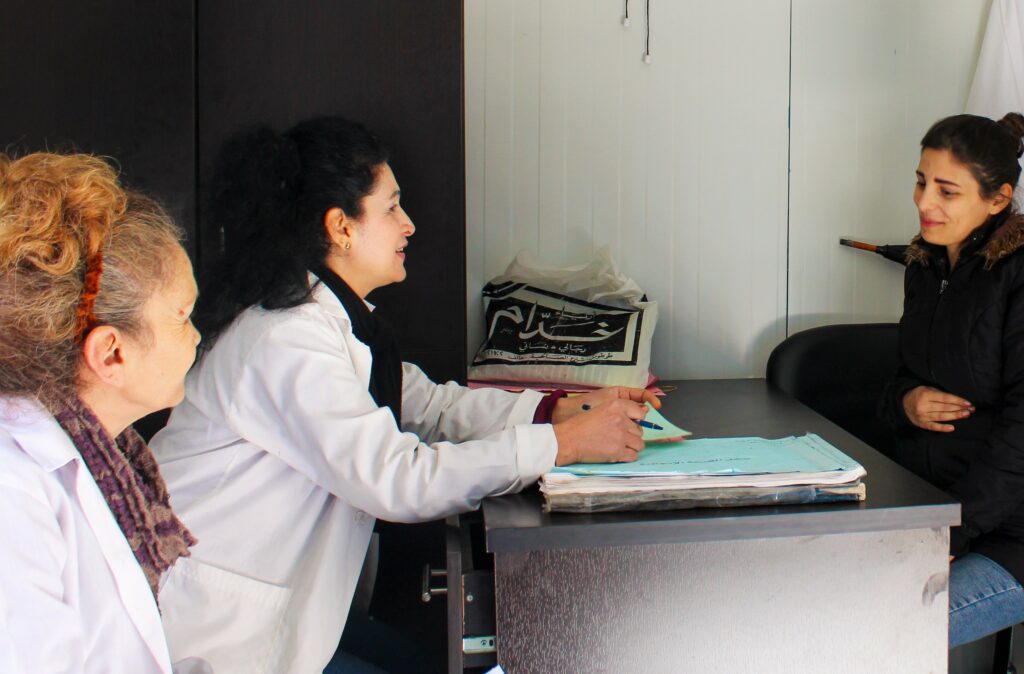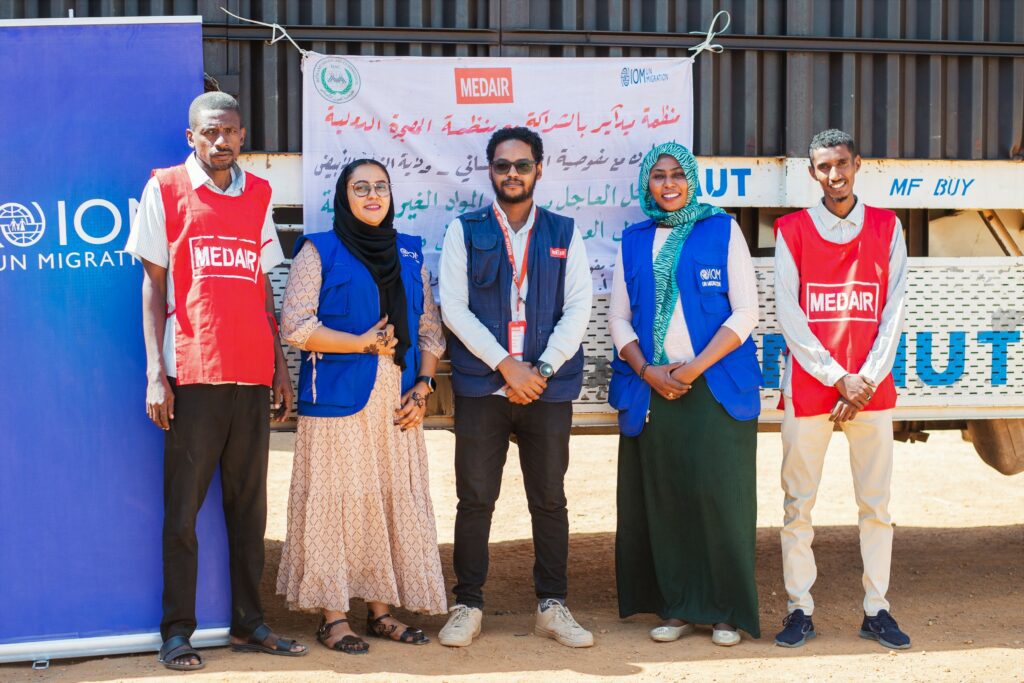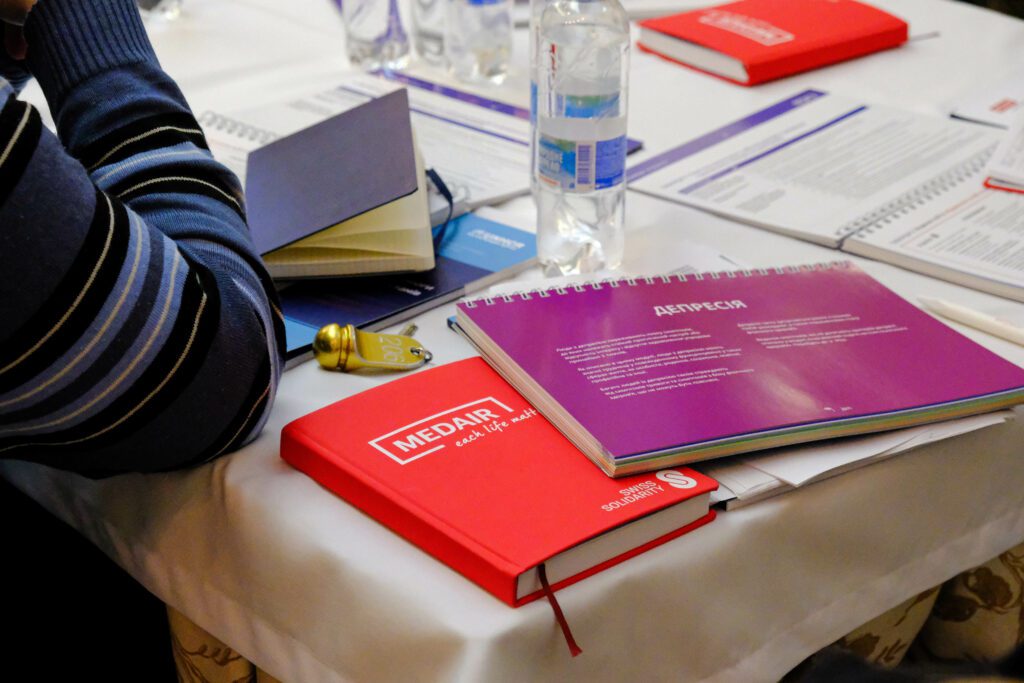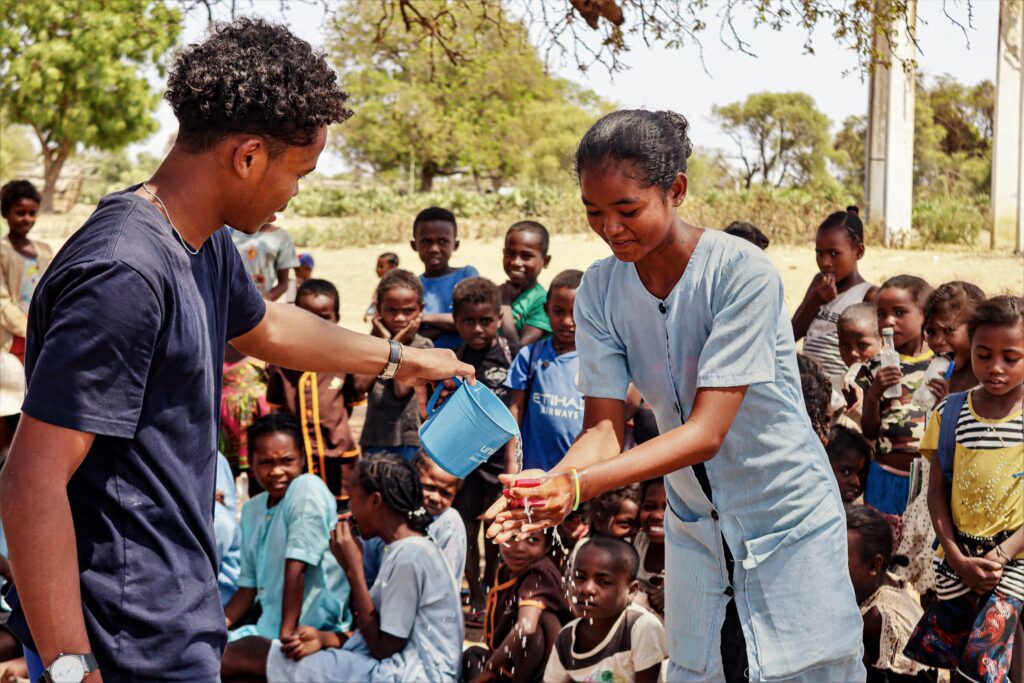Safeguarding communities in informal settlements from harsh weather conditions and keeping them safe is our main goal” says Omar.
The Bekaa Valley is home to a large population of Syrian refugees who have fled their country to escape the ongoing conflict. The valley is prone to flooding during heavy rainfall and harsh weather conditions, which poses a significant threat to the safety and well-being of these communities. As such, site improvements have become imperative to mitigate the risk of flooding and safeguard the Syrian refugees residing in the informal settlements.
On a visit with the shelter team in Ghaze, Bekaa Valley, I was able to visit a completed site improvement project. Before implementing site improvement in informal settlements, a comprehensive risk assessment needs to be conducted to identify the areas that are most at risk of flooding. This assessment will enable the implementation of targeted interventions that focus on the communities at most risk, ensuring that resources are used efficiently and effectively. It is crucial to engage with the local communities and the refugees themselves to ensure that the interventions are appropriate and meet their specific needs.
From a distance, I noticed the outskirts of the settlement outlined by drainage ditches. According to the team, one of the most effective measures that can be taken to prevent flooding at the informal settlement is to improve the drainage system. This can be accomplished by installing new drainage channels, repairing, and expanding existing ones, and clearing debris that obstructs water flow. In this case, obstruction of water flow due to debris was the primary cause of flooding in this settlement, which was situated across from a farm and was prone to flooding during heavy rainfall.
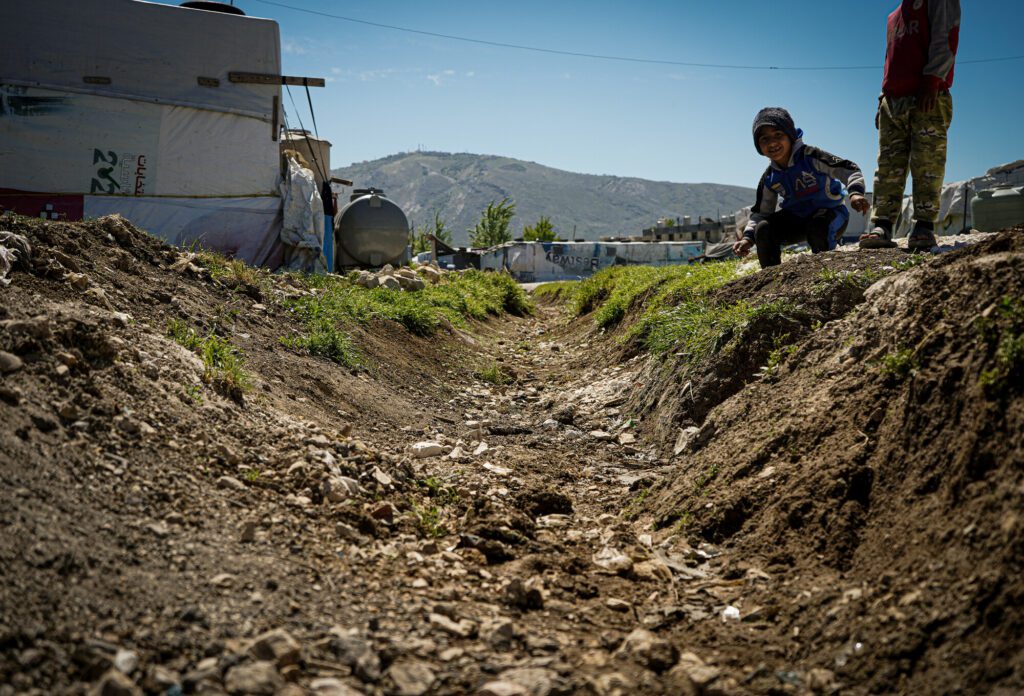
The main drainage ditch was constructed by Medair’s shelter team at the informal settlement (where site improvement was implemented) to divert a body of water in case of flooding. All surface draining ditches are connected to the main draining ditch which diverts the body of water to the riverbank in Ghazze, Bekaa Valley on the 27th of April 2023. ©Medair/Abdul Dennaoui
A drainage ditch was built across the informal settlement to prevent water damage without obstructing the placement of the tented homes. The existing underground drainage system was improved by eco-friendly Polyvinyl Chloride pipes, otherwise known as PVC pipes, which can withstand high water pressures. The channel directs water from the settlement directly to the riverbank, preventing flooding, and soil loss, and enhancing stability for the community.
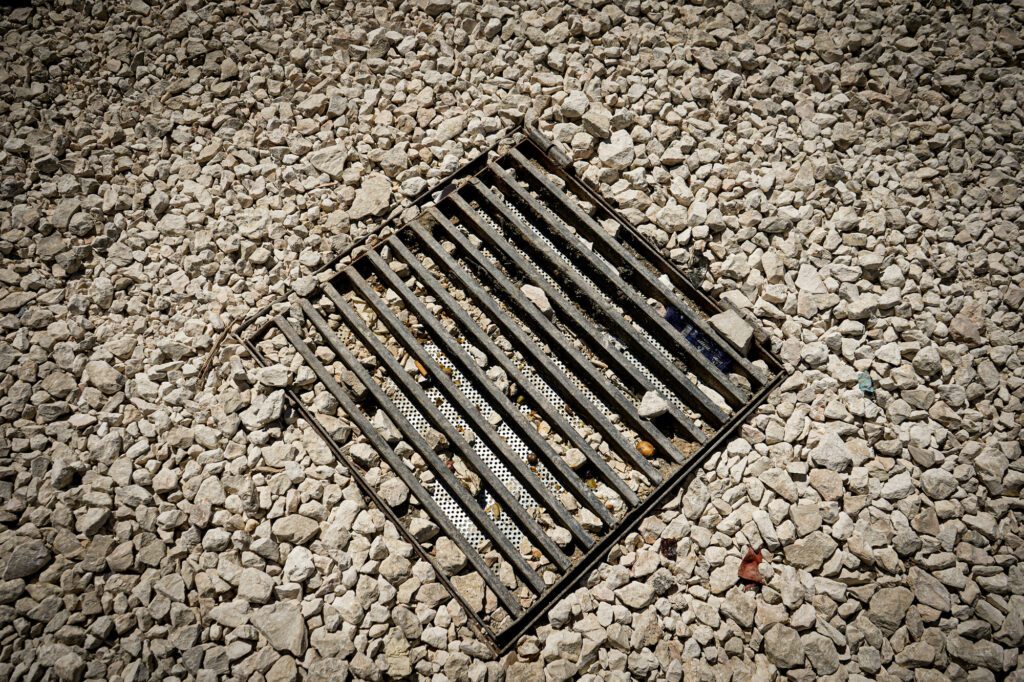
Surfaced drainage ditch incorporating punched metal sheets to block the entry of large debris into the drainage system, leading the body of water straight to the main implemented drainage ditch, leading up to the riverbank in Ghazze, Bekaa Valley on the 27th of April 2023. ©Medair/Abdul Dennaoui
Furthermore, the team has constructed surface drainages throughout the settlement, incorporating punched metal sheets to block the entry of large debris into the drainage system, thereby preventing blockages. These surfaced drainages facilitate efficient water drainage from any water-retentive areas directly into the drainage system and ultimately into the main drainage network and then to the riverbank.
According to Omar, Medair’s Shelter Officer, it is important to invest in long-term solutions that address the root causes of flooding and unsustainable land use practices. “Safeguarding communities in informal settlements from harsh weather conditions and keeping them safe is our main goal. We always aim to implement sustainable projects, by looking at the main obstacles and how we can solve them whilst being mindful of the environment. In this case, the informal settlement suffered from extreme flooding and blocking the existing drainage system. Debris was accumulating and flowing directly from the nearby farm into the draining system obstructing the body of water from streaming. One of the solutions was to enlarge the pipes from eight inches to twelve inches, allowing the pipes to withstand more water pressure without easily being obstructed. Furthermore, a larger drainage ditch was installed in the informal settlement where the body of water will accumulate from all existing surfaced draining ditches, where it is directly diverted to the riverbank. By addressing these underlying issues, we can ensure the sustainability of the interventions and safeguard the Syrian refugees in the Bekaa Valley for years to come,” says Omar.
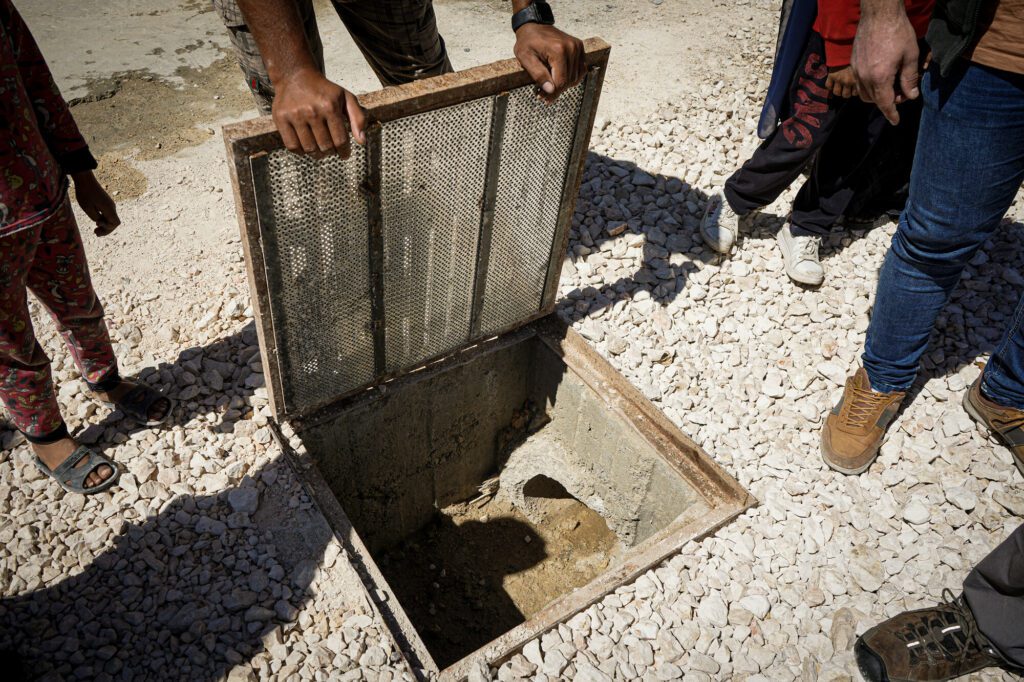
The main surface drainage ditch where the body of water is drained into which is linked to the main drainage ditch leading to the river bandk, implemented by Medair’s shelter team at the informal settlement in Ghazze, Bekaa Valley on the 27th of April 2023. ©Medair/Abdul Dennaoui
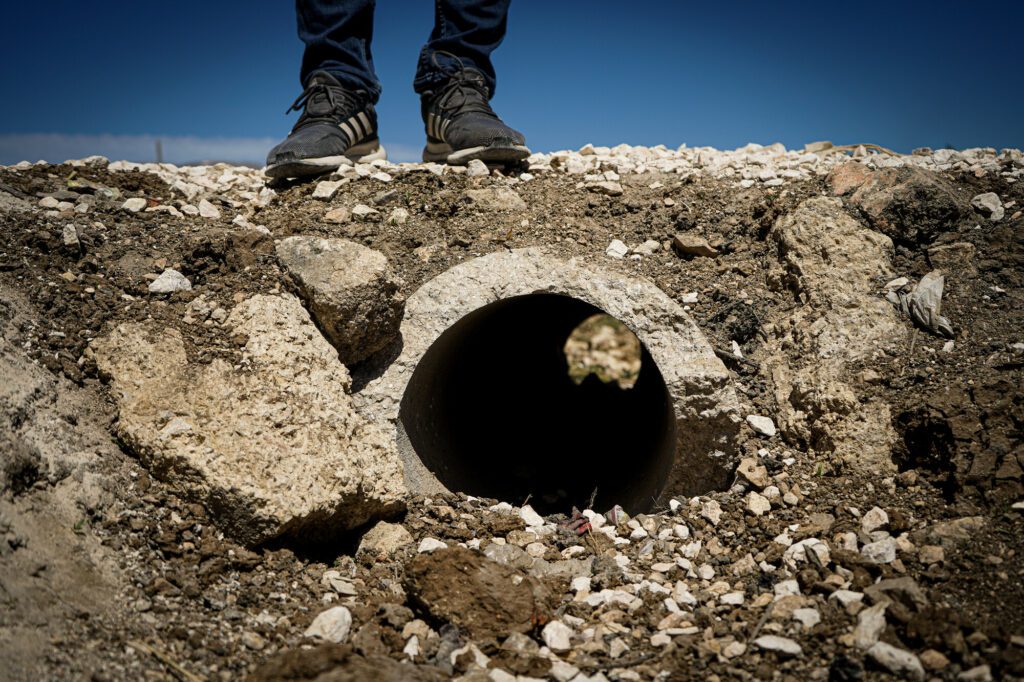
The drainage pipe, implemented and completed by Mediar’s shelter team, leads to the main drainage where water is accumulated in case of flooding from all the installed surface draining ditches. It directs the body of water straight to the riverbank in Ghazze, Bekaa Valley on the 27th of April 2023. ©Medair/Abdul Dennaoui
Medair services in The Bekaa Valley, Lebanon, are funded by United Nations High Commissioner for Refugees (UNHCR) and generous private donors.
This content was produced with resources gathered by Medair field and headquarters staff. The views expressed herein are those solely of Medair and should not be taken, in any way, to reflect the official opinion of any other organization.


